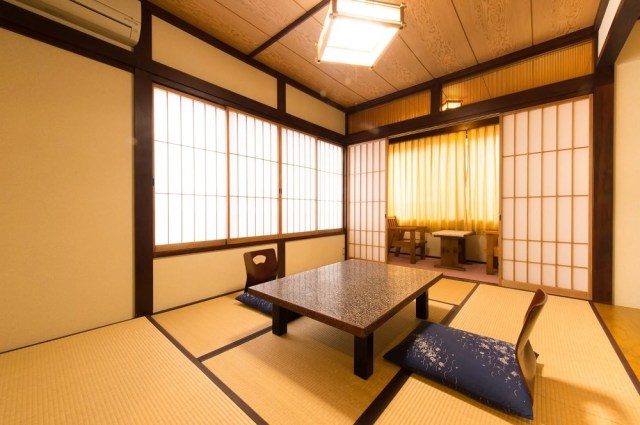
Negative reaction to unfair comparison between ryokan and hotel experiences prompts video takedown.
A big question for travelers in Japan is whether to spend the night in a modernly styled hotel or in a ryokan, as traditional Japanese inns are called. Obviously, Hilton would prefer that you choose a hotel, since that’s the category the company belongs to. But while nobody begrudges Hilton’s understandable preference in the debate, the way the company recently tried to convince people to skip staying in ryokan prompted a backlash, leading to the chain to take down one of its promotional videos.
Originally posted to the Hilton Japan YouTube channel on October 24, the video opens with a young couple standing at the front desk of a ryokan, where an employee is checking them in and also rattling off a lengthy list of rules and restrictions. “Next, the baths are open from 5 a.m. to 11 p.m.,” she says, showing that there was even more to the explanation before we joined the scene. “Dinner will be brought to your room at 6 p.m., so no matter what, please make sure that you have finished eating by 9 o’clock,” she continues, as the couple’s faces grow increasingly tense and unhappy at the continuing barrage. “Breakfast is from 7 a.m. to 10 p.m., with the last chance to order at 9:30. At around 8 o’clock, the dining room gets very crowded. Checkout is at 10 a.m. Here is your room key.”
“It’s your vacation, but you can’t relax at all,” says the narrator before the scene shifts to show the same couple in the lobby of the Conrad Tokyo, the Tokyo branch of Hilton’s luxury hotel brand.
As they happily snap a selfie with the dazzling lights of the Shiodome district skyline behind them, a Conrad employee approaches them and says “If you’d like to relax a little longer, we can serve your dinner at a later time.” “Really?” the woman asks, prompting a reassuring “Yes” from the employee, before the narrator ends the video with “Your journey is different depending on where you stay” as the beaming pair later sits down to eat.
Initially, the video, which is entirely in Japanese and appears to have been created by the Hilton Japan marketing team, didn’t attract a great deal of attention. As time went by, though, it started drawing negative reactions on Japanese social media from viewers who saw the video as insulting to traditional Japanese inns, and on November 15, Hilton removed the video from its YouTube channel (though copies can still be found online, such as here). The Hilton group has also issued an apology, with a spokesperson saying “We produced the video with the intention of spotlighting warm hospitality, but it ended up upsetting viewers and members of the ryokan industry. Taking into consideration those negative reactions, we have taken down the video…We will make efforts not to repeat [this sort of thing, and] we deeply apologize.”
The video’s juxtaposition between the hotel and ryokan experience isn’t entirely without truth. At most ryokan, the traditional, communal Japanese-style baths are not open 24 hours a day. Instead of an on-the-property restaurant, ryokan typically serve their meals either in your guestroom or a dining room, with a narrower window of available mealtimes than what would be offered at a hotel restaurant, and there are sometimes other time restrictions as well, such as ryokan that shut their front gate after a certain time of night or request that guests be awake and up by a certain time so that the maids can fold and put away the futon sleeping mats.
▼ “Sir, please wake up so I can put away the futon,” is something I’ve actually had a ryokan employee say to me.
That said, the juxtaposition isn’t always as stark as the Hilton video portrayed. Hotel restaurants also have times at which they stop serving breakfast and dinner (although ryokan not offering lunch makes their breakfast deadline a little more severe). And while some ryokan communal baths being closed at certain hours of the day is the norm, many ryokan guestrooms also have an in-room shower that you can use whenever you want.
Perhaps the most questionable part of the video’s ryokan-versus-hotel portrayal is the gap in luxuriousness. The video’s ryokan interior is dim and dingy, complete with a flickering lightbulb. The couple are dressed in drab, rumpled clothes, carrying a shoulder and backpack, and with shadowy, sallow faces. When they’re at the Conrad, though? They’re dressed to the nines, the woman in a sleeveless dress and dangly earrings and the man in a sharp black blazer, dress shirt, and slacks. Neither of them is burdened with any luggage, either, having apparently either already dropped their bags in their room or entrusted them to the staff at the desk.
But both hotels and ryokan come in all sorts of swankiness levels. Just like not every hotel is as fancy as the Conrad, not every ryokan is as modestly appointed as the one shown in the Hilton video. Yes, posh ryokan are expensive, but the Conrad is about as far from cheap travel accommodations as you can get. So despite trying to frame the situation as “ryokan versus hotel,” all the video is really showing is “cheap versus expensive places to stay,” with the not surprising conclusion that spending more money gets you more luxury.
There’s one more aspect to consider, which is that many ryokan are located in Japan’s more rural areas, places where most of the sightseeing attractions are places to visit during the day and there’s not much in the way of nightlife. Because of that, a lot of travelers choosing to stay in a ryokan are planning to return to their room around dusk and be in for the rest of the night, so finishing dinner by 9 or being out of the bath by 11 isn’t really inhibiting their ability to relax and take things easy during their vacation.
Add it all up, and it’s not hard to see how the video has drawn reactions from Japanese Twitter users such as:
“This ryokan-bashing commercial is a really dirty move by Hilton.”
“The Hilton [eventually] closes its restaurants at the end of the night, and they only serve breakfast at set hours. Basically the same thing as ryokan.”
“Hilton, you don’t need to disrespect ryokan to promote yourself.”
“Pushing something else down to build yourself up is classless.”
“Hotels and ryokan both have their own good points. The video doesn’t get that.”
“I guess it’s not inaccurate, but it’s gathering up only all the negative parts about staying at a ryokan. Ryokan and hotels both have their own unique characteristics, so I pick between them depending on what kind of trip I’m planning to take.”
“I like ryokan and hotels. I stay in both.”
As shown in the reactions, not everyone in Japan loves everything about ryokan all the time. Still, ryokan still exist because they still have their own unique appeal, and even their rules and regulations sometimes contribute to an atmosphere of mutual respect between guest and innkeeper that some Japanese travelers appreciate.
All in all, picking between a hotel or ryokan can be a complex decision with several factors to consider. But the backlash to the video serves as a reminder that negative comparative advertising rarely goes over well in Japan, so even though marketing can be complicated, following the simple rule of “If you’re not going to say anything nice, don’t say anything at all” and focusing on your own company’s positives will go a long way in helping build goodwill.
Source: Maido na News, Jin, Twitter
Top image: Pakutaso
Insert images: Wikipedia/Itoshin87, Pakutaso (1, 2)
● Want to hear about SoraNews24’s latest articles as soon as they’re published? Follow us on Facebook and Twitter!

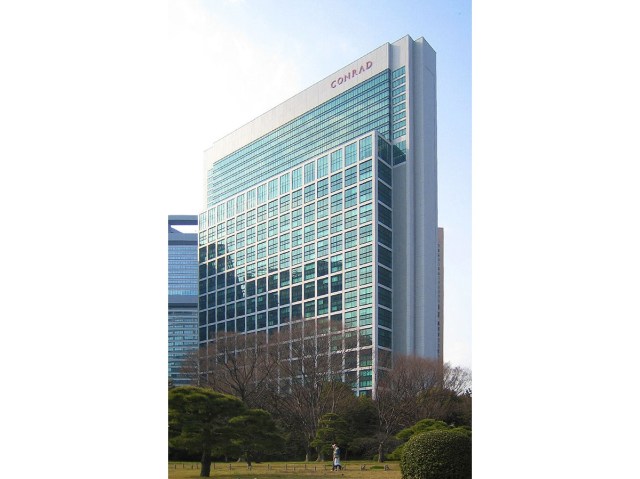
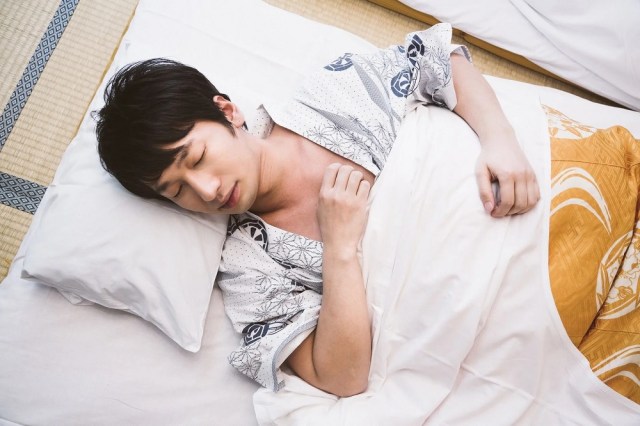
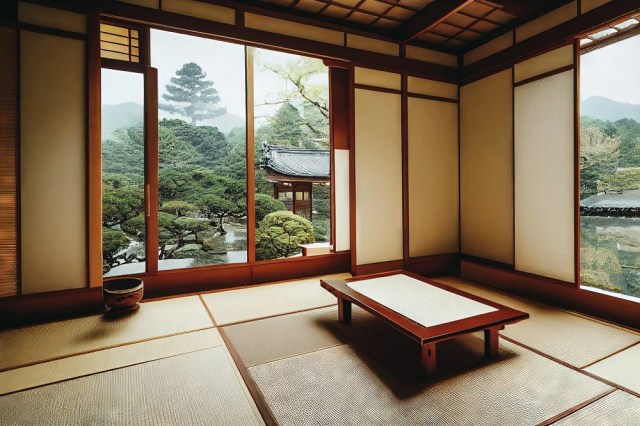
 Rakuten Travel reveals the top 5 best-rated, off-the-beaten-track Japanese ryokan inns
Rakuten Travel reveals the top 5 best-rated, off-the-beaten-track Japanese ryokan inns Learn all about enjoying a traditional Japanese-style ryokan inn from this nine-minute video!
Learn all about enjoying a traditional Japanese-style ryokan inn from this nine-minute video! Low-cost Japanese inn welcomes foreign guests with hot springs, sake tastings, cosplay backdrops
Low-cost Japanese inn welcomes foreign guests with hot springs, sake tastings, cosplay backdrops How should you use the small hiroen in a Japanese ryokan hotel room?
How should you use the small hiroen in a Japanese ryokan hotel room? Doll otaku’s plastic bedmate gets loving hospitality from beautiful Japanese hot spring inn
Doll otaku’s plastic bedmate gets loving hospitality from beautiful Japanese hot spring inn Foreigner’s request for help in Tokyo makes us sad for the state of society
Foreigner’s request for help in Tokyo makes us sad for the state of society Japanese city loses residents’ personal data, which was on paper being transported on a windy day
Japanese city loses residents’ personal data, which was on paper being transported on a windy day Seaside scenery, history, and so many desserts on Yokohama’s Akai Kutsu【Japan Loop Buses】
Seaside scenery, history, and so many desserts on Yokohama’s Akai Kutsu【Japan Loop Buses】 Randomly running into a great sushi lunch like this is one of the best things about eating in Tokyo
Randomly running into a great sushi lunch like this is one of the best things about eating in Tokyo Red light district sushi restaurant in Tokyo shows us just how wrong we were about it
Red light district sushi restaurant in Tokyo shows us just how wrong we were about it “Hey, how’d you get our personal information?” we ask a Japanese telemarketer
“Hey, how’d you get our personal information?” we ask a Japanese telemarketer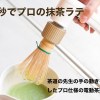 Electric matcha whisk from Japan serves up frothy green tea in seconds
Electric matcha whisk from Japan serves up frothy green tea in seconds Harajuku Station’s beautiful old wooden building is set to return, with a new complex around it
Harajuku Station’s beautiful old wooden building is set to return, with a new complex around it Japan’s summertime towelket pillowcases are even better with the addition of Ghibli stars【Photos】
Japan’s summertime towelket pillowcases are even better with the addition of Ghibli stars【Photos】 The oldest tunnel in Japan is believed to be haunted, and strange things happen when we go there
The oldest tunnel in Japan is believed to be haunted, and strange things happen when we go there McDonald’s new Happy Meals offer up cute and practical Sanrio lifestyle goods
McDonald’s new Happy Meals offer up cute and practical Sanrio lifestyle goods Japanese ramen restaurants under pressure from new yen banknotes
Japanese ramen restaurants under pressure from new yen banknotes French Fries Bread in Tokyo’s Shibuya becomes a hit on social media
French Fries Bread in Tokyo’s Shibuya becomes a hit on social media Studio Ghibli releases new action figures featuring Nausicaä of the Valley of the Wind characters
Studio Ghibli releases new action figures featuring Nausicaä of the Valley of the Wind characters New private rooms on Tokaido Shinkansen change the way we travel from Tokyo to Kyoto
New private rooms on Tokaido Shinkansen change the way we travel from Tokyo to Kyoto Tokyo Tsukiji fish market site to be redeveloped with 50,000-seat stadium, hotel, shopping center
Tokyo Tsukiji fish market site to be redeveloped with 50,000-seat stadium, hotel, shopping center Beautiful Ghibli sealing wax kits let you create accessories and elegant letter decorations【Pics】
Beautiful Ghibli sealing wax kits let you create accessories and elegant letter decorations【Pics】 Studio Ghibli releases Kiki’s Delivery Service chocolate cake pouches in Japan
Studio Ghibli releases Kiki’s Delivery Service chocolate cake pouches in Japan New definition of “Japanese whiskey” goes into effect to prevent fakes from fooling overseas buyers
New definition of “Japanese whiskey” goes into effect to prevent fakes from fooling overseas buyers Our Japanese reporter visits Costco in the U.S., finds super American and very Japanese things
Our Japanese reporter visits Costco in the U.S., finds super American and very Japanese things All-you-can-drink Starbucks and amazing views part of Tokyo’s new 170 meter-high sky lounge
All-you-can-drink Starbucks and amazing views part of Tokyo’s new 170 meter-high sky lounge More foreign tourists than ever before in history visited Japan last month
More foreign tourists than ever before in history visited Japan last month New Pokémon cakes let you eat your way through Pikachu and all the Eevee evolutions
New Pokémon cakes let you eat your way through Pikachu and all the Eevee evolutions Disney princesses get official manga makeovers for Manga Princess Cafe opening in Tokyo
Disney princesses get official manga makeovers for Manga Princess Cafe opening in Tokyo Sales of Japan’s most convenient train ticket/shopping payment cards suspended indefinitely
Sales of Japan’s most convenient train ticket/shopping payment cards suspended indefinitely Sold-out Studio Ghibli desktop humidifiers are back so Totoro can help you through the dry season
Sold-out Studio Ghibli desktop humidifiers are back so Totoro can help you through the dry season Japanese government to make first change to romanization spelling rules since the 1950s
Japanese government to make first change to romanization spelling rules since the 1950s Ghibli founders Toshio Suzuki and Hayao Miyazaki contribute to Japanese whisky Totoro label design
Ghibli founders Toshio Suzuki and Hayao Miyazaki contribute to Japanese whisky Totoro label design Doraemon found buried at sea as scene from 1993 anime becomes real life【Photos】
Doraemon found buried at sea as scene from 1993 anime becomes real life【Photos】 Tokyo’s most famous Starbucks is closed
Tokyo’s most famous Starbucks is closed One Piece characters’ nationalities revealed, but fans have mixed opinions
One Piece characters’ nationalities revealed, but fans have mixed opinions We asked a Uniqlo employee what four things we should buy and their suggestions didn’t disappoint
We asked a Uniqlo employee what four things we should buy and their suggestions didn’t disappoint Princesses, fruits, and blacksmiths: Study reveals the 30 most unusual family names in Japan
Princesses, fruits, and blacksmiths: Study reveals the 30 most unusual family names in Japan The top five best multiple-hot-spring hotels in all of Japan
The top five best multiple-hot-spring hotels in all of Japan More than a capsule hotel, downtown Tokyo capsule ryokan is awesome, budget-friendly spot to stay
More than a capsule hotel, downtown Tokyo capsule ryokan is awesome, budget-friendly spot to stay Japan’s cheapest hotel charges just 130 yen (US$1.20) for a room, with a huge, no-privacy catch
Japan’s cheapest hotel charges just 130 yen (US$1.20) for a room, with a huge, no-privacy catch How to turn konbini food into a luxury Japanese meal
How to turn konbini food into a luxury Japanese meal The Ryokan Tokyo Yugawara offers a unique writer’s retreat with a luxurious onsen
The Ryokan Tokyo Yugawara offers a unique writer’s retreat with a luxurious onsen New Shibuya capsule hotel targets women visiting from overseas with gorgeous bath and more
New Shibuya capsule hotel targets women visiting from overseas with gorgeous bath and more A private onsen bath with a karaoke machine is two of Japan’s best things with zero embarrassment
A private onsen bath with a karaoke machine is two of Japan’s best things with zero embarrassment Paris Hilton’s Sailor Moon cosplay and character description are bafflingly off-source material
Paris Hilton’s Sailor Moon cosplay and character description are bafflingly off-source material 5 tips for staying healthy while traveling in Japan this winter!
5 tips for staying healthy while traveling in Japan this winter! Paris Hilton gets stuck in a crowded elevator in China, praises her savior【Video】
Paris Hilton gets stuck in a crowded elevator in China, praises her savior【Video】 All we want for Christmas is to stay in the new Mimaru Hotel Pokémon room, opening Dec 24
All we want for Christmas is to stay in the new Mimaru Hotel Pokémon room, opening Dec 24 Japan’s first dedicated e-sports hotel to open this spring with three full floors of gaming gear
Japan’s first dedicated e-sports hotel to open this spring with three full floors of gaming gear First-ever Peanuts Hotel opens in Japan, and the rooms look amazing【Photos】
First-ever Peanuts Hotel opens in Japan, and the rooms look amazing【Photos】 Traditional Japanese inn offers ultimate amenity: A cat companion to spend the night with
Traditional Japanese inn offers ultimate amenity: A cat companion to spend the night with Hilton Odawara Resort & Spa is offering special ninja training and recognition for your children!
Hilton Odawara Resort & Spa is offering special ninja training and recognition for your children!
Leave a Reply